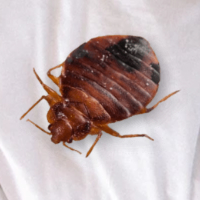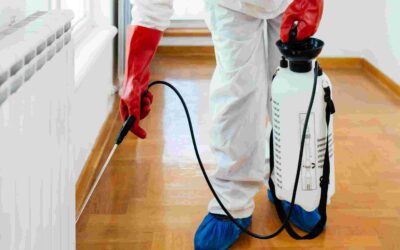
How do bed bugs get inside my house?
Bed bugs– a phrase that strikes fear into the hearts of any homeowner, renter, or hotel guest. The universally hated creatures are tiny, blood-sucking pests that infest beds and other living spaces, often leaving homeowners puzzled about how they managed to get inside.
Unfortunately, there are a variety of ways that bed bugs can find their way into your home. Understanding these entry points is essential for effectively preventing them from getting inside, or early detection if they’ve already gotten inside– helping you to create and maintain a bug-free living environment.
1. Hitchhiking on belongings
Bed bugs are notorious hitchhikers. They’re able to cling to your belongings, like luggage, clothing, or used furniture, during your travels.
When you then bring these items into your home, the bed bugs can quickly disembark– immediately infesting your living space.
Hotels, public transportation, and even visiting friends or family can unfortunately be sources of bed bug infestations, because it’s so easy for the tiny insects to hitch a ride on your possessions without catching your notice.
2. Cracks and crevices
Bed bugs are very small, flat creatures. Their size and shape allows them to squeeze through tiny cracks and crevices in walls, floors, and ceilings.
They can enter your home from neighboring infested apartments or shared walls in multi-unit buildings. If you live in close proximity to others, bed bugs can migrate through gaps in the building’s structure and find their way into your space.
3. Used furniture and secondhand items
While used furniture and secondhand clothing and decor can make your space look great without breaking the bank, these items can potentially introduce bed bugs to your living space. Bed bugs hide in the seams, crevices, and upholstery of furniture.
While the items may look like they’re in good condition, they could be harboring bed bugs. Thoroughly inspecting anything you bring into your home is a good practice. Look for evidence of bed bugs in the seams and cracks of items– any tiny space where they could fit is a good place to look. You’ll often be able to tell if bed bugs have been present in your items by spotting their droppings or eggs– tiny dark spots or white specks.

4. Traveling and hotels
Traveling is great, but it can potentially expose you to bed bugs– especially if you’re staying in a hotel, motel, or vacation rental. Bed bugs can hide in mattresses, bedding, and furniture in these establishments, waiting for an opportunity to hitchhike back to your home.
When you check into a hotel room or vacation rental, leave your luggage and belongings outside or in your vehicle while you closely inspect the place for any evidence of bed bugs– tiny reddish-brown bugs, black spots, or shed skins. If you spot any of these, do not stay in the room, and alert the staff of the hotel or rental.
Find different accommodations, and if possible, wash any clothing you were wearing with hot water immediately, rather than putting it in a laundry hamper or near your other clothing and belongings.
5. Guest visits
When guests visit your home, it’s possible for them to unknowingly bring bed bugs with them. Bed bugs can hide in luggage, bags, or clothing, and if a guest’s living space is infested, the bed bugs can transfer to your home.
While it can be difficult to broach the subject– you don’t want to be insulting!– if at all possible, have your guests check their belongings and living areas for signs of infestation before they visit.
6. Used books and electronics
While their name might suggest that bed bugs only live within beds and other soft surfaces, they are unfortunately resourceful creatures that are able to hide in unexpected places. Used books, device, and other items purchased from secondhand stores can actually serve as carriers for these pests.
When you bring these items in your home, inspect them closely and wash or treat them before introducing them into your living space.
Take preventative measures
Bed bugs have many ways of getting inside your home– from hitchhiking on your belongings or purchases to sneaking through cracks in your building. Fully understanding these entry points and taking preventative measures whenever possible is an essential practice for maintaining a bed bug-free home.
If you do happen to notice evidence of bed bugs in your space, it’s time to call in a professional– this is a serious issue that can be incredibly difficult to treat on your own. Reach out through our website or call the location that’s closest to you for speedy assistance.
More posts from West Termite, Pest & Lawn
Top 5 Spring Pests in Arkansas and How to Keep Them Out
Looking to protect your home this spring? Pest season in Arkansas starts as early as March, and if you’re not prepared, you could find yourself sharing your space with ants, termites, mosquitoes, spiders, or wasps. In this guide, we will cover the top five spring...
Spring Into Action: Preventing Termite Infestations in Arkansas Homes
Termite infestations are a serious concern for homeowners in Arkansas, especially during the spring when these pests become most active. Preventing termite infestations early can save you from expensive structural damage and long-term headaches. Termites thrive in the...
Early Spring Lawn Care Tips: How to Keep Your Arkansas Yard Healthy
A healthy lawn starts in early spring. If you want lush, green grass by summer, the groundwork begins as the weather warms and the soil softens. The right early spring lawn care routine is essential for homes in Arkansas, where fluctuating temperatures and humidity...



